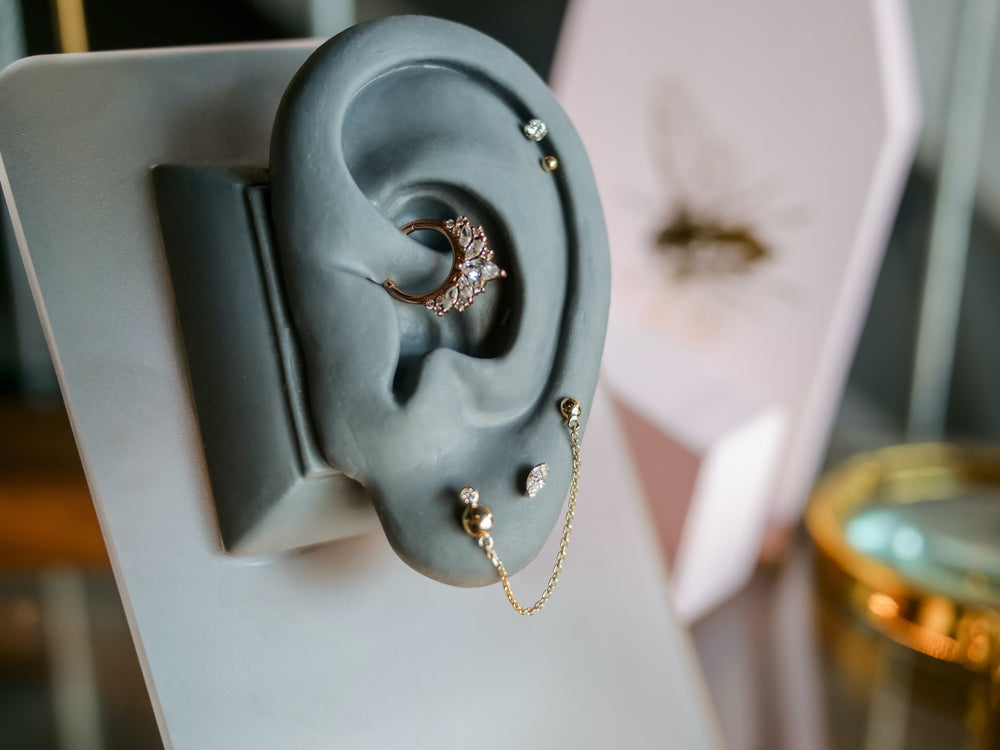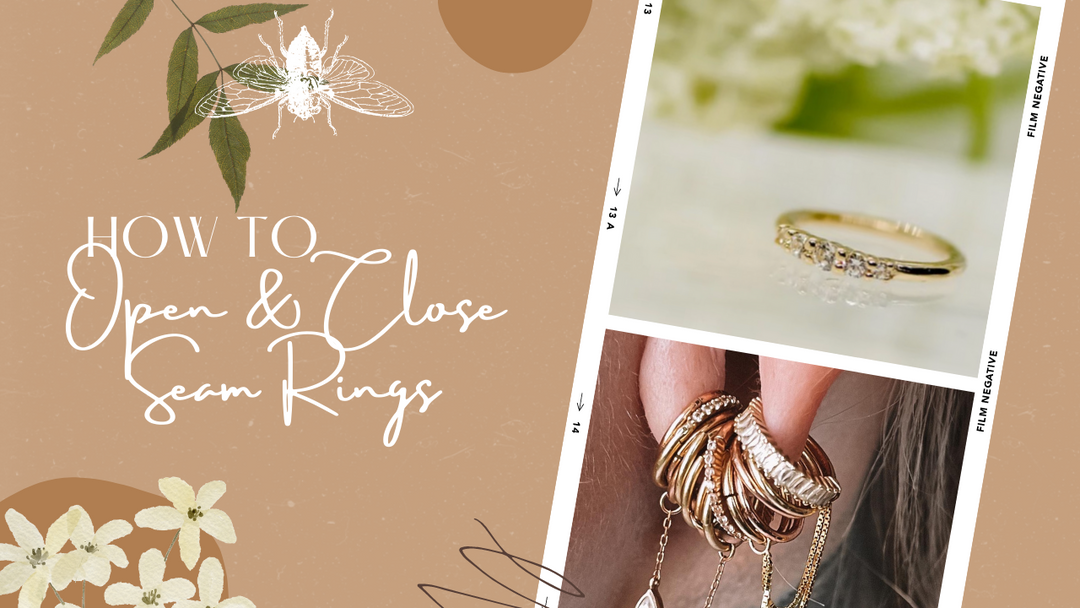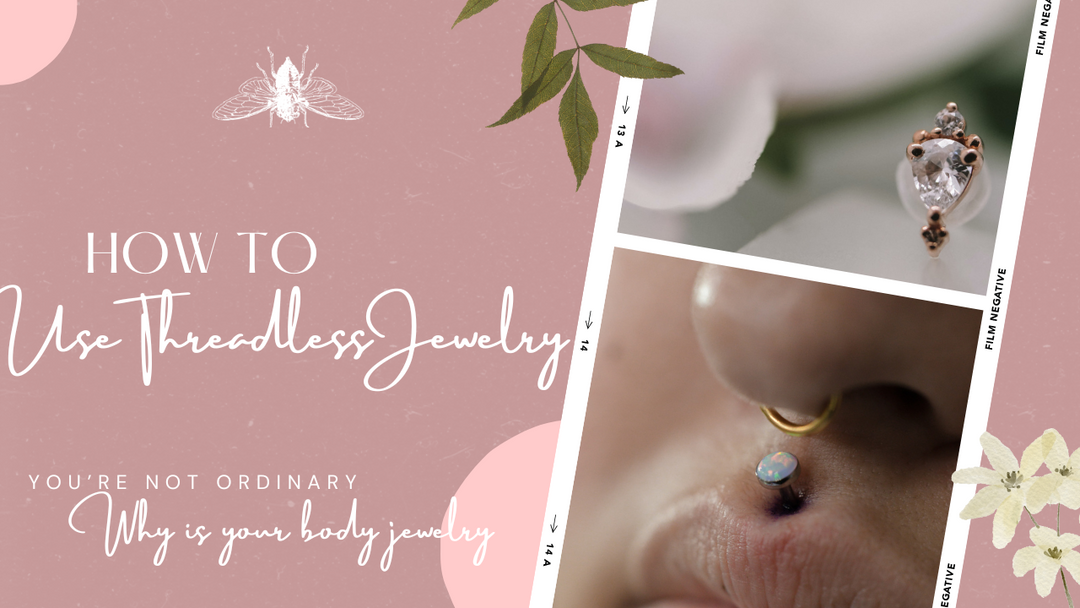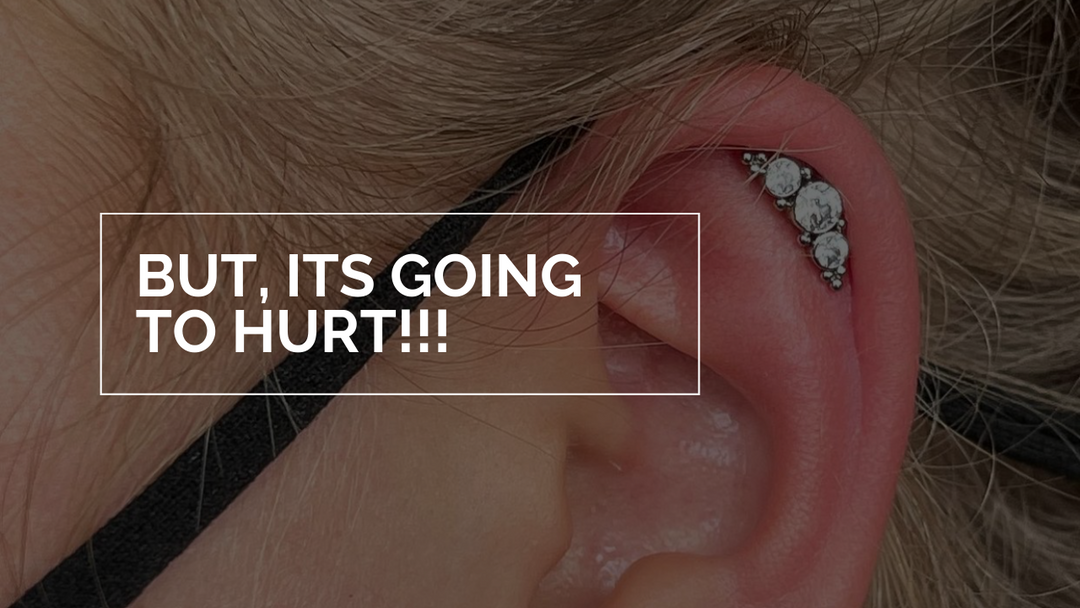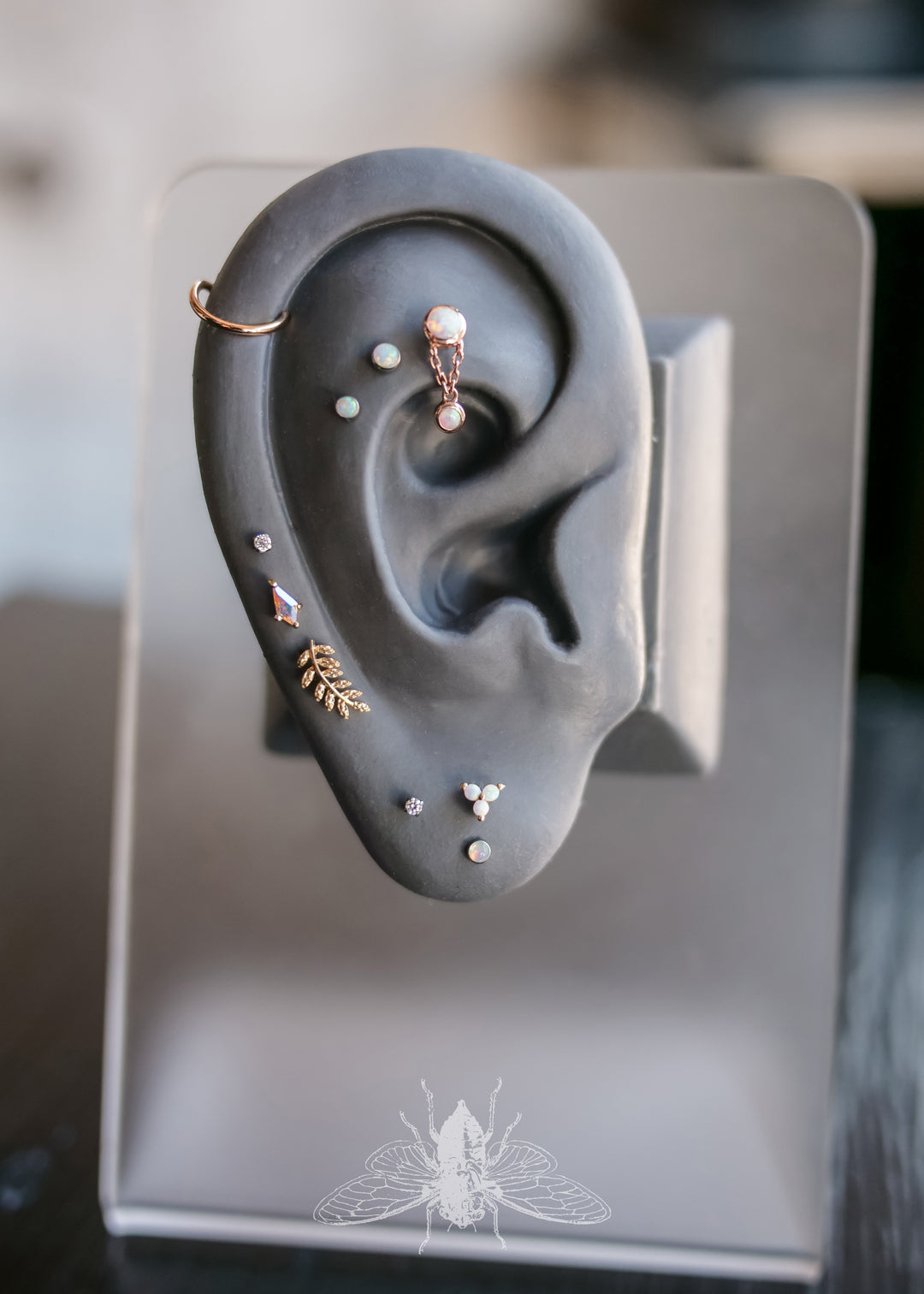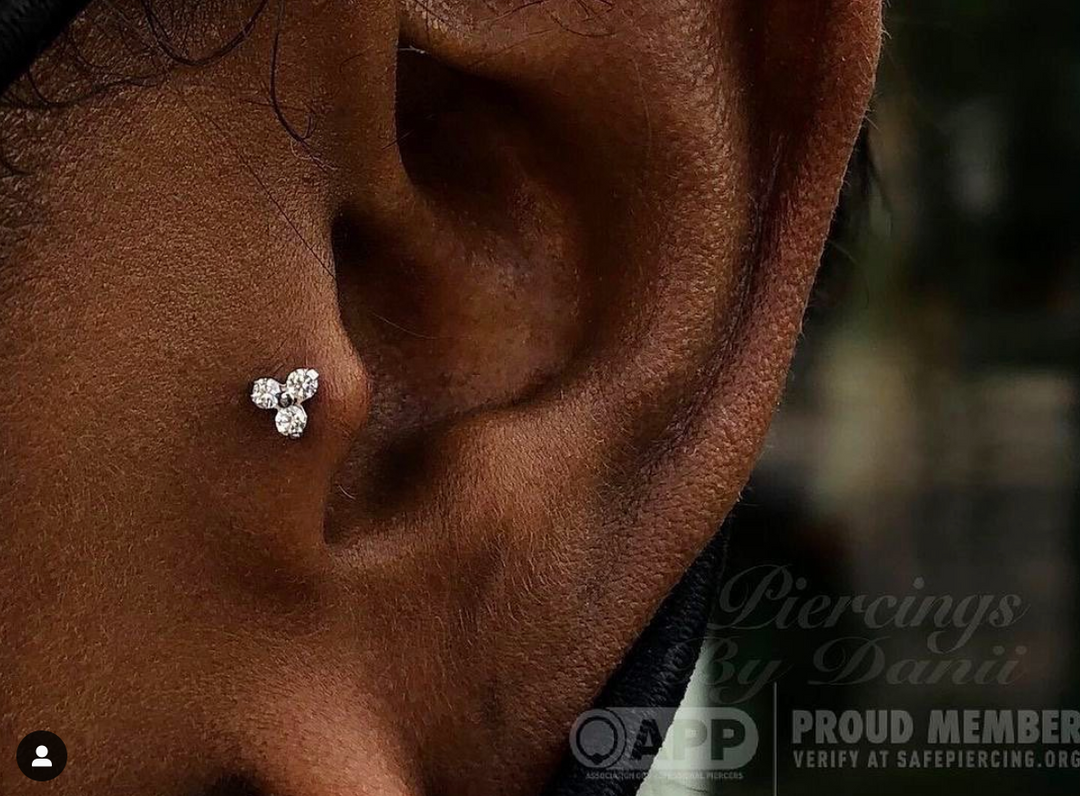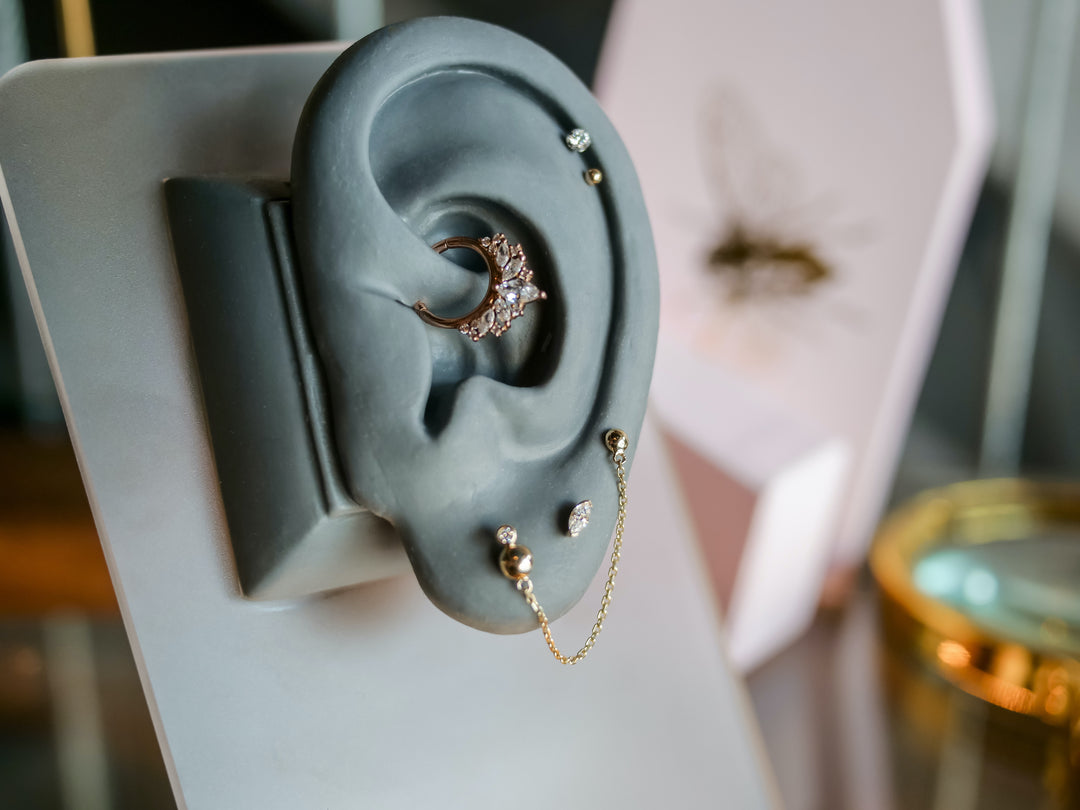I Think my Piercing is Infected - What Do I Do?
If you discover you have a complication with your piercing, the first thing to do is not panic, contact the piercer who did the piercing and let them recommend the best course of action. If this does not work, consulting a doctor is the next step. Do NOT Google your symptoms, do NOT call another piercer in the area as you will more than likely not receive accurate information and will be more inclined to panic or remove a piercing that can be healed easily.
Most importantly - DO NOT REMOVE THE JEWELRY. We can not stress that enough. Removing the jewelry in the case of an infection will cause the infection to become trapped under the skin and thus worsen.
If you develop a fever, contact your doctor immediately.
In almost all cases, the complication is harmless and easy to treat, we have compiled a list of common complications, how to identify them and how we recommend treating them. We do not recommend following these instructions without consulting your piercer first.
Theres a RED BUMP on my Piercing:
Hypertrophic Scars are a scar that sits above the surface of the skin. They are quite small and rather common. Hypertrophic scarring sometimes goes away spontaneously, or it may recur and recede in cycles for an extended period of time before improving substantially or disappearing.
Both Keloids and Hypertrophic Scars are more likely to develop on areas like cartilage, on darker skin types, people prone to scarring or after a trauma or due to movement and friction in the area (sleeping on the piercing, playing with it, getting it caught on hair etc), however there is no way to guarantee you won’t get them and no way to prevent or predict them.
Keloids are a very large, dense mound of scar tissue that becomes bigger than your original piercing. They can be extremely unsightly and can grow extremely rapidly to enormous sizes. Unfortunately, once you have formed a keloid, you will never completely remove it without surgery. We highly recommend avoiding getting piercings - specifically in cartilage type areas if you have a family history of keloids.
Keloids are more likely to develop on areas like cartilage, on darker skin types, people prone to scarring or after a trauma or due to movement and friction in the area (sleeping on the piercing, playing with it, getting it caught on hair etc), however there is no way to guarantee you won’t get them and no way to prevent or predict them.
Identifying Hypertrophic Scarring
• Raised fleshy bump surrounding a piercing that stays within the bounds of the piercing
• Usually somewhat pink or red in color, at least initially
• Not tender; may itch
• Tends to form during the healing period
• No pus or other drainage
Identifying Keloids
• Large, disproportionate to the size of the piercing, by at least twice the size
• Sometimes tender, painful, or itchy
• Usually red or hyper-pigmented and vascular
• Can develop over many months, or even up to a year following the piercing
To Treat Hypertrophic Scars - we recommend speaking to your piercer and following their recommendations or a Sea Salt Compress.
Sea Salt + Water Soak/Compress
◦ Add 1/4 teaspoon of sea salt to one cup of boiling water. Stir until the salt is completely dissolved.
◦ When the salt water has cooled slightly (you want it to be as hot as possible without burning your skin), dip a clean cotton pad into the cup.
◦ Hold the soaked cotton pad against the bump for two minutes. Do NOT take your jewelry out, avoid pulling or pushing it around.
◦ Repeat the salt soak twice a day until the bump has disappeared.
Some people recommend adding Chamomile tea to their salt soak as this can soothe the inflammation.
Others report Tea Tree oil to help reduce keloids.
Piercing Pimples are a very common and yet relatively unknown complication, they are basically excess oil and dirt that has formed in/around your piercing, basically like a giant pore. They are easy to remove however can reoccur indefinitely and at any time for no rhyme or reason.
Identifying a Piercing Pimple
• Small, slightly elevated pus-filled bump or pimple adjacent to the piercing
• Red and inflamed, but contained locally
• May be tender, itch, or burn, though some are painless
• Usually secretes pus and/or blood when drained (or popped)
To Treat Piercing Pimples - we recommend speaking to your piercer and following their recommendations or a Sea Salt Compress.
Sea Salt + Water Soak/Compress
◦ Add 1/4 teaspoon of sea salt to one cup of boiling water. Stir until the salt is completely dissolved.
◦ When the salt water has cooled slightly (you want it to be as hot as possible without burning your skin), dip a clean cotton pad into the cup.
◦ Hold the soaked cotton pad against the bump for two minutes. Do NOT take your jewelry out, avoid pulling or pushing it around.
◦ Repeat the salt soak twice a day until the bump has disappeared.
You can pop these the same way you pop a pimple - we do not recommend this but if you do have one pop, drain all the pus and fluids out like you would with a pimple, and clean with the above sea salt soak.
